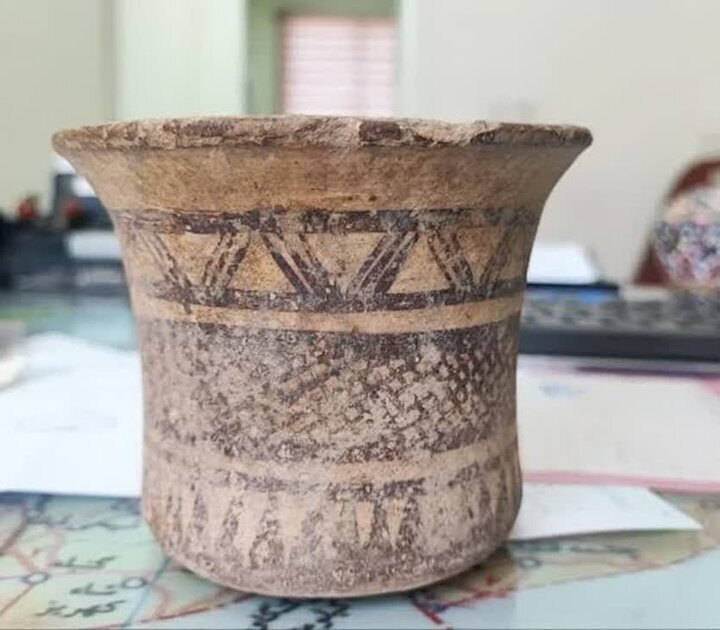5,000-year-old earthen vessel discovered in western Iran

TEHRAN - A 5,000-year-old clay vessel has been discovered in Asadabad, a rural district of Hamadan province in western Iran.
The clay object dates back to the third millennium BC and was found in the Asadabad plain, Mehr quoted Kamran Akbari-Shayegan, who presides over Asadabad’s tourism office, on Thursday.
The relic was identified and donated to Asadabad’s cultural heritage office by Dr. Arman Vafai, an archaeologist who has collaborated with the office on various archaeological projects.
Akbari-Shayegan explained that initial comparative studies suggest the cup belongs to a period known as “Godin III” in the region’s chronology. This classification is based on the work of the late Canadian archaeologist Kyler Young, who laid the groundwork for dating areas in the eastern Zagros Mountains.
The cup is set to be transferred to the provincial capital for further studies and precise dating after administrative procedures are completed. Following these analyses, it will be displayed at Asadabad’s cultural heritage museum for public viewing.
While the ceramic piece appears nearly intact, with only minor damage at the rim, Akbari-Shayegan expressed uncertainty regarding its archaeological context since it was not obtained through a formal scientific process.
He also raised questions about the current condition of the vessel, suggesting it might have been buried as a funerary object.
Moreover, the official emphasized that without understanding the archaeological context of the find, any conclusions remain speculative, highlighting the need for further studies by the Cultural Heritage and Archaeology Department of Hamadan province.
Links with the Godin III period of a nearby archaeological site of the same name, according to the official, suggest significant similarities with a vast area encompassing western, and southwestern Iran, and the Fars province.
This period corresponds with a time known as “Susa D” in southwestern Iran, as noted by researchers like William Sumner, who was a leading figure in the study of ancient Iran and director of the Oriental Institute from 1989 to 1997, he explained.
Located in the Kangavar Valley of the Zagros Mountains, approximately halfway between Hamadan and Kermanshah, Godin Tepe was occupied more or less continuously from the Early Chalcolithic period in about 5,000 BC to the late Iron Age in about 500 BC.
Godin Tepe is also one of the most important historical monuments left from the Medes period in Iran. The site was first discovered in 1961 during an archaeological dig conducted by the Museum of the University of Pennsylvania. Later, in 1865, Godin was excavated throughout five field seasons from 1965 to 1973 by a team directed by the late T. Cuyler Young Jr., under the auspices of the University of Toronto and the Royal Ontario Museum.
AM
